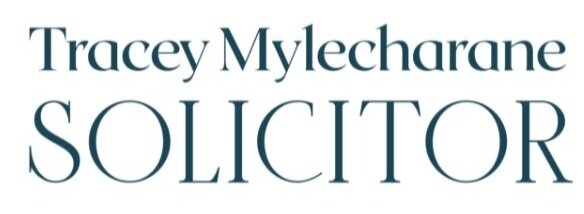What happens when you use something that has been trademarked?
In many cases, people don’t know they’re using a registered trademark until it’s too late. But prevention is better than cure—and never was this more true than when it comes to accidentally using someone else’s trademark.
In my recent blog, The Intellectual Property That Wasn’t Theirs, I shared some stories of famous trademark cases. One of those was Katy Perry vs Katie Perry, and as far as celebrity stories go, it’s pretty relatable: It’s very unlikely that the singer knew she was infringing on a trademark before she received a cease and desist letter from the lawyer of the Australian fashion designer.
So let’s put ourselves in Katy Perry’s shoes for a moment. Not something we do every day, but let’s imagine that we’ve been unknowingly using someone else’s trademark. What happens then?
Remember—I’ve made a mastermind for what you need to know if you’re thinking about making an application to register a trademark. If you’re keen to gain a solid understanding of trademarks and how they could apply to your business, it’s well worth checking out. It’s Masterclass #5 in the Legally Empowered Entrepreneur Series.
How you might find out you’re using a registered trademark
The person holding the trademark might reach out to you, or someone else might figure it out and let you know.
But most often, the way people find out they’re infringing on a trademark is when they receive a cease and desist letter.
What is a cease and desist letter?
A cease and desist letter is a type of warning. It can be used under a number of different circumstances, not just for trademark infringement.
Essentially, it’s the step before potential legal action: it isn’t a court order, and the letter itself is not enforceable. But legal action can be the next step if the content of the letter is not addressed by the date specified.
When it comes to trademark infringement, the letter will usually contain:
A description of the alleged infringement
A formal request to stop
A warning of the consequences, and
The time limit for compliance.
What should I do if I receive a cease and desist letter?
The first thing you’ll need to do is NOT PANIC. It can be quite scary to receive one of these letters, but just know that there’s a path forward. Like I said, it’s not a court order. It’s to advise you that someone is alleging there’s a problem and requesting that you stop.
The second thing is to address it. Don’t ignore it—it won’t go away. You’ll need to respond, and the best way is to do this in consultation with your lawyer.
The worst thing you could do is respond in a hurry. Even if the claim is unfounded, the other party believes you are infringing on their trademark so it’s important to be careful here. You may be able to avoid the situation escalating any further.
When you speak with your lawyer, they will be able to tell you:
If the claim has legs
If it’s worth disputing
If it’s best to comply with the request
If you decide that the best course of action is to comply, you’ll need to be sure to remove the infringing materials as soon as possible.
How to avoid getting caught up in trademark litigation
Okay, so perhaps you’re reading this and thinking, “I really don’t want to have to do any of that”. Fair enough. And luckily, there are plenty of things you can do—right now—to avoid it.
So what can you do to be sure you’re not infringing on a registered trademark?
Here’s my main tip: Not only do you need to search for the exact name or phrase you want to use, you’ll also need to search for things that could be considered similar, too similar, or deceptively similar.
Check the IP Australia Website
If you do nothing else, the most important trademark search to conduct is the one on the IP Australia website. IPA is responsible for administering IP rights in Australia, and all existing registered trademarks are searchable on their website.
As well as checking IP Australia, you can also conduct:
A Google Search
Probably one of the simplest things you can do is conduct a quick google search for the name or phrase. Try adding other words to it as well, for example: if you want to see if…
A Business Name Search
You want to be extra sure that the name of your business, course, podcast, or product is not already the name of another business. You can check it here.
A Search of URL Registrations
You can use a search like this one or any other domain registrar to check if the words you plan to use are already taken.
It pays to conduct a search of social media handles as well.
All of these steps are smart ones to take in the early days, so that you don’t spend time and money setting up something that you’ll only have to change later.
Finally, if you think something you’re using needs to be trademarked, then talk with your lawyer. In the Katy Perry case, the trademark was registered after the singer had already been performing under the stage name. So if it’s important, and there’s a chance someone else could take it, you’ll want to get in before someone else does!
It’s truly best to consult a lawyer, rather than go it alone. If you’d like to have a chat, you can book a free one with me.
I cover Intellectual Property and more in my guide, Legal Advice for Small Business, so check it out if you’re keen to make sure you’ve got your small business bases covered from a legal perspective.


